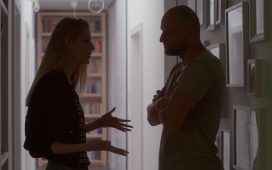Boris Johnson has been branded a “disgrace” after telling the Commons that the best way to honour the memory of murdered MP Jo Cox is to “get Brexit done”.
The prime minister was responding to an emotional speech by Cox’s Labour colleague and friend Paula Sherriff, who urged Johnson to stop using inflammatory language such as “surrender”, “traitor” and “betrayal” when referring to lawmakers who disagree his hard-line vision, reports The Guardian. The PM caused further uproar by dismissing Sherriff’s warnings of the potential dangers to MPs as “humbug”.
Following the clash in Parliament on Wednesday, Cox’s widower, Brendan, tweeted that he had felt “sick” to hear his late wife’s name being used in such a way. Liberal Democrat leader Jo Swinson called Johnson a “disgrace”, while the Scottish National Party’s (SNP) Nicola Sturgeon expressed “disgust”.
Who was Jo Cox?
Born Helen Joanne Leadbeater on 22 June 1974 in Batley, West Yorkshire, the future MP went to Heckmondwike Grammar School and then became the first person in her family to attend university, reading social and political studies at Cambridge.
After graduating in 1995, she worked as a political adviser for then Labour MP Joan Walley and Glenys Kinnock, then a member of the European Parliament. She also worked in senior policy positions for Oxfam, Save the Children and the NSPCC.
International affairs was one of Cox’s key passions. She argued that there was a lack of what she called a “moral compass” in British policy. She repeatedly called for more protection of the civilian population in war-torn Syria, and was strongly in favour of allowing more refugees into the UK.
She became an MP after being voted into office in West Yorkshire’s Batley and Spen constituency in the 2015 general election, helping to increase Labour’s majority to 6,051.
Cox had two children with her husband Brendan, who served as an adviser on international development to Gordon Brown during the Labour politician’s premiership.
How did she die?
Cox was murdered on 16 June 2016 – a week before the EU referendum. She was stabbed 15 times and shot three times outside her constituency surgery in Birstall, near Leeds.
As she lay bleeding on the street, Cox told her assistants to run away and save themselves, rather than help her. She died shortly afterwards in the back of an ambulance, despite emergency surgery. She was 41.
During the attack, Cox’s assailant, Thomas Mair, had shouted “this is for Britain”, “keep Britain independent”, and “Britain first”.
Appearing in court for the first time at his subsquent trial, Mair gave his name as “death to traitors, freedom for Britain”, as Reuters reported at the time.
–––––––––––––––––––––––––––––––
For a round-up of the most important stories from around the world – and a concise, refreshing and balanced take on the week’s news agenda – try The Week magazine. Get your first six issues free
–––––––––––––––––––––––––––––––
He was sentenced to prison for the rest of his life following a seven-day Old Bailey trial during which he made no effort to defend himself.
What is Jo’s legacy?
The Jo Cox Foundation was established in September 2016 by her friends and family, with the objective of promoting “a kinder, more compassionate society where every individual has a sense of belonging and where we recognise that we have more in common than that which divides us”.
In May 2017, a memorial designed by the murdered MP’s young children was unveiled in the House of Commons, at the first of the foundation’s Great Get Together celebration. These nationwide events are designed to bring together people who would never normally meet, encouraging the public to celebrate unity in diversity.
In an interview with the BBC months after her murder, Cox’s widower said: “Taking forward her work, her legacy and fighting for the Britain she believed in is our way of remembering her.”
Her legacy extends beyond the UK too. A street in the French town of Avallon that was formerly called Rue Pierre–Etienne Flandin was renamed Rue Jo Cox in her honour in May 2017.













